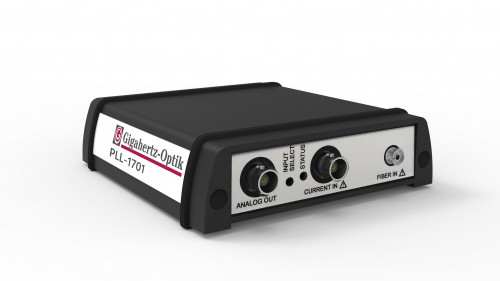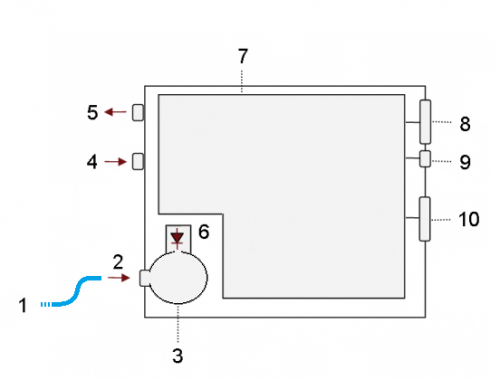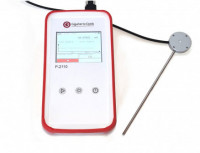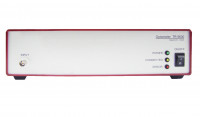This product is no longer manufactured. Remaining stock may still be available. Please refer to the alternatives listed below under "Similar products" or contact us directly.
Alternative Products for this discontinued product:
PLL-1701
High-speed dual input optometer for measurement of CW, modulated radiation and optical fibers in W
- Optometer with electrical input (BNC)
- and optical input with small integration sphere for W measurement of optical fibers
- Logarithmic and linear amplifier
- USB and RS422 interface

High Speed transimpedance amplifier and digital data sampler
The PLL-1701 optometer is designed for two different types of fast optical measurements with two different amplifier modes (linear or logarithmic).
The device incorporates a small integrating sphere and detector for the measurement of optical power from fibers (FC connector) in W over the wavelength range 400 nm to 1550 nm. The measurement results can be output either directly as an analogue voltage (BNC) or as digital data via USB or RS422 interface. The pure analogue measurement conversion (transimpedance) to the BNC is with a speed of 200000 Samples/s suitable for very fast measurement purposes. The digital measurement is only limited by the transmission speed of USB and RS422 (100kHz).Instead of the integrating sphere measurement, an external detector can be used with the provided BNC current-input.
The device itself can be configured by the two remote interfaces.
Flicker measurements
The fast sampling rate enables flicker evaluation of lighting products when used in conjunction with an external photometric detector such as the VL-3701-1. The standard flicker metrics Pst, SVM, Mp, Flicker frequency, Flicker index and Flicker percent are all implemented in the available software.
16 µs or 500 µs rise time linear amplifier
The PLL-1701 linear signal amplifier offers fixed rise times of either16 µs or 500 µs for all gain ranges which can be set by remote commands. The total gain range of the current to voltage amplifier is divided in nine ranges in order to achieve an optimal signal to noise ratio.
logarithmic amplifier
The PLL-1701 also offers a logarithmic amplifier which covers the whole dynamic range with one amplifier gain range. Hence no switching of gains is needed which would otherwise take some time and thereby limit some high speed applications.
AA, ADC and DAC mode
In addition to the traditional measurement functions of an optometer (AA - analogue to analogue (transimpedance) and ADC – analog to digital converter) the PLL-1701 incorporates a digital to analog converter able to transfer 16-bit digital data to the analogue electrical output (BNC); signal generator functionality (-5V to +5V).
Software
Windows based software is supplied with the PLL-1701 which provides all common functions to do remote control measurements and analysis via USB and RS422. Optionally an S-SDK-PLL1701 is available to implement the meter by the user’s own software.

schematic drawing: 1 = optical fiber (user), 2 = FC connector, 3 = integrating sphere, 4 = Current in (external detector), 5 = Voltage Out, 6 = Photodiode, 7 = electronic board, 8 = Power supply, 9 = USB, 10 = I/O interface

PLL-1701
Front View
Rear View
Similar Products
Product Categories

